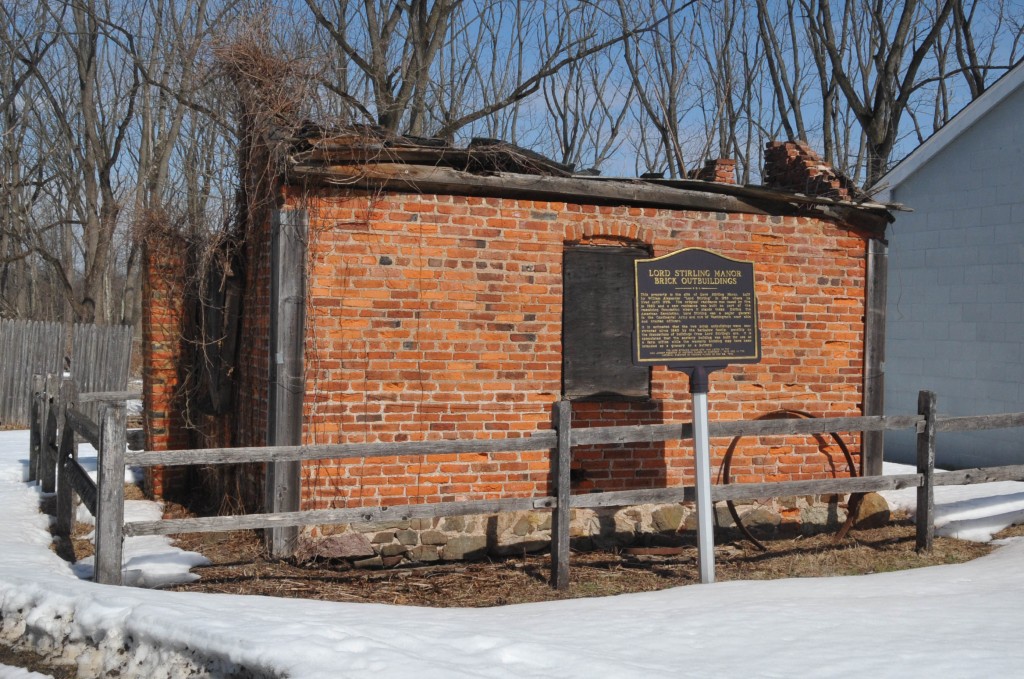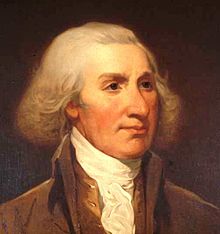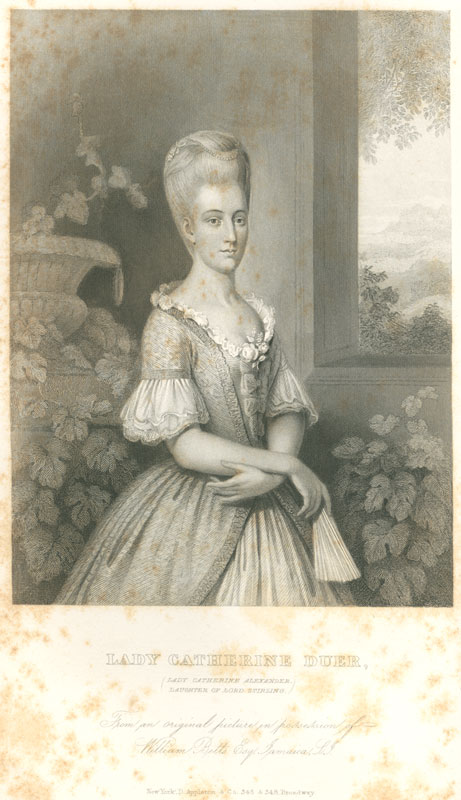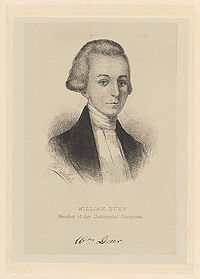*Note: Some of the language below may be a little antiquated because its excerpts and transcriptions from a the book -Transcription from Historic Houses of New Jersey By Weymer Jay Mills .J. B. Lippincott Company – written in 1902 = The original words provide a unique glimpse of the people and early times in New Jersey.
Surrounded by the blue Bernard hills, near the present hamlet of Stirling, New Jersey was an old mansion famous in history for having been the country residence of the American peer, William Alexander, better known as Lord Stirling.
Lord Stirling (William Alexander)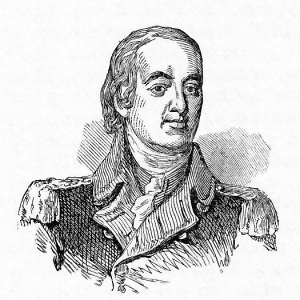
A portion of it is still in existence, embedded in a modern dwelling. It was erected in the year 1761 by this gentleman, who stands forth in his period like some brilliant figure in romance. Bor n to all the advantages of wealth and high position, he rode through life on the triumphal car of hereditary greatness. Fortunately, he had nobility of soul as well as of name, and his arrogance and pomposity, maligned and ridiculed by the society of his time, is easily overshadowed at this late day by the many great services he rendered his country.
In 1761 Lord Stirling had just returned from abroad. While in England he had pushed his claim to the Earldom of Stirling, which had been held in abeyance for a number of years. All his efforts proved unsuccessful. But the final decree of the House of Lords did not dampen his spirits to any great degree, if we can judge by the manner in which he journeyed home.*
He arrived on the man-of-war “Alcide”
He arrived in New York on the man-of-war ” Alcide,” after a voyage of three months. There his valet, French hairdresser, lackeys, chair-bearers, and a wardrobe of new foreign fashions made him the sensation of the hour in the salons of the fine houses then facing the Bowling Green.
His mind thoroughly imbued with English customs, he began the erection of the Stirling Manor on his Somerset estate in New Jersey. This tract of about seven hundred acres was inherited from his father, James Alexander, the surveyor-general of New Jersey.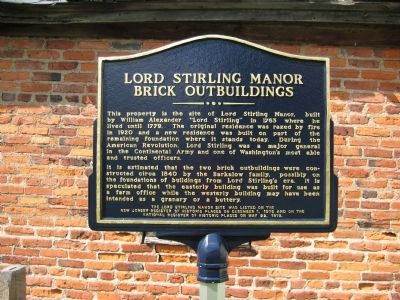
A large portion of it was of great beauty and fertility. The most skilled gardeners in America were hired to design and lay out the immense park, containing an enclosure for deer, a rose-garden, an Italian vineyard, and other accessories of a nobleman’s seat in the mother country.
Mrs. Eliza Susan Morton Quincy, wife of the celebrated Josiah Quincy of Boston, who in her youth had a home near the Stirling Manor, has left us a description of it as she knew it then. She says:
“The seat of Lord Stirling, called by the country-people ‘The Buildings,’ was two miles distant. Designed to imitate the residence of an English nobleman, it was unfinished when the war began.
Lord Stirling estate site
The stables, coach-houses, and other offices, ornamented with cupolas and gilded vanes, were built behind a large paved court behind the mansion. The front with piazzas opened on a fine lawn descending to a considerable stream called the Black River. A large hall extended through the centre of the house. On one side was a drawing-room with painted walls and stuccoed ceiling. Being taken there as a child, my imagination was struck with a style and splendor so different from all around.”
Manor was unfinished
Although Mrs. Quincy wrote that the Manor was unfinished at the time of the Revolution, the family had spent many summers there previous to 1776. Elegant ladies and cavaliers riding in the Stirling coach emblazoned with coronets and panelled medallions were familiar sights to the farmers of the neighborhood. So great was Lord Stirling’s generosity to the poor on the outskirts of his estate that they bobbed and courtesied to him whenever he passed in his chariot. His lordship accepted all their kowtowing and obeisance with the complacency of a man of his title.
Among the Schuyler traditions there is a story told that Mrs. Cochrane, the sister of General Philip Schuyler, in a spirit of fun, when courtesying to Lord Stirling, once touched her high head-dress to the ground, whereupon his lordship was vastly pleased. The company present were very much amused at his display of vanity, and for a time society called the low sweeping bow “the curtsy Stirling.”
Gen. Philip Schuyler
Another anecdote is told of Lord Stirling’s feeling of importance. On the occasion of the execution of a British spy, Lord Stirling was standing near the gallows. The soldier who was to hang the poor wretch gave him a few moments to commune with his Maker and seek peace for his soul. The fellow fell on his knees, and in a beseeching voice cried, ” Lord, Lord, have mercy on me!” Lord Stirling, imagining the supplication was addressed to him, turned to the man, and said, in a loud voice, ” None, you rascal, none!”
In those few years before the war many people were entertained at the partly-furnished country-seat. The Rutherfords, the Watts family, the Livingstons of New York and New Jersey, and the Jays, all connected with them by marriage.
The Cluxtells and Steptoes of the South were among the great people constantly journeying there. The fairest American beauties and handsomest beaux fluttered before the golden mirrors in the stuccoed drawing-room during June and July.
General Stirling had taken a place among the most brilliant commanders
Wits were there, too,—butterfly wits and waspish ones; and when the Revolution was on, and General Stirling had taken a place among the most brilliant of our commanders, the latter class did not forget him. His regal hospitality served him an ill turn then, and by reason of it he was rendered a conspicuous target for every spiteful and satirical lampooner. The acrimonious Jones wrote very disparagingly of him, and Jonathan Odell published a dastardly attack on his character, stinging, no doubt, at the time, but only amusing to-day:
“What matters what of Stirling may become?
The quintessence of whiskey, soul of rum!
Fractious at nine, quite gay at twelve o’clock,
From thence to bedtime stupid as a block.”
Brighter and more beautiful than any jewel in the Stirling coronet were Mary and Kitty Alexander, the two daughters of Lord Stirling. Charming and quaint they look at us to-day out of an old miniature done by some stray limner in their girlhood.
The Lady Stirling, their mother, was a Livingston, a sister of Governor Livingston of New Jersey, who presented such a poor appearance in his youth that he was dubbed in New York society “The Broomstick.” She was not a beauty, and whatever share of personal attractiveness Ladies Mary and Kitty possessed was most likely inherited from their father.
Sarah Livingston Stirling
Lord Stirling was of fine personal appearance, and closely resembled the immortal Washington in face and figure. The Countess Stirling has been given one of the back pages in history, owing to the greater brilliancy of the lives of her husband and daughters, especially that of Kitty. She was “by nature mild, serene,” and most likely a good portion of her time was spent governing and caring for the extensive household with which her husband always surrounded her.
There is an unrecorded tradition that she was very fond of pets, and her dogs, cats, birds, and monkeys were the terror of her acquaintances. Their pranks must have delighted her very vivacious second daughter and those merry cousins, the girls of Governor Livingston, who “under manners soft and engaging” hid a great capacity for fun and frolic.
Lord Stirling embraced the cause of liberty
At the first sign of the severance of the relations between the colonies and the home government Lord Stirling ardently embraced the cause of liberty, and practically laid his immense fortune, estimated at one hundred thousand pounds, on the altar of his country’s welfare. He became a personal friend of General Washington.
That calm judge of mankind placed the utmost confidence in his ability and integrity. During the early years of the war, while he was on Long Island, to the front at the battle of Trenton, proving the hero at bloody Brandywine and bloody Monmouth, and capturing honor after honor by his brave conduct, his manor house up among the hills of Basking Ridge was not deserted, and was still a centre of sociability.
After Washington vacated the Wallace House for the Ford Mansion at Morristown, in 1779, General Greene removed his pretty wife and staff from the Van der Vere house to Basking Ridge, and established his head-quarters at the Stirling Manor.
With such agreeable hostesses we can imagine that the merry, dancing Mrs. Greene was in her element. We learn of her husband sending to Philadelphia “for a pasteboard for a bonnet” for her, which gives us a hint that her wardrobe was being replenished for this elegant household, whose management up to the time of Lady Kitty’s wedding was conducted with some of its old-time state.
Lady Kitty Stirling Duer
Of that fair belle’s marriage to Colonel William Duer of New York much has been written, as it is an interesting subject to most historians. The rich and handsome Colonel Duer was descended from the noble family of De Vere. His father, a planter in the West Indies, had left him a large fortune in early manhood.
At the time of his marriage he was considered the finest prize in the matrimonial market of the colonies. Like the Skinner family of Perth Amboy, there is a story told that the Duers were a branch of a royal family, and such a descent, added to great wealth, gave brilliant lustre to Colonel Duer’s popularity. He was, no doubt, much sought after by designing mammas and eligible daughters. But he remained indifferent to all the charms displayed before him until the winsome Lady Kitty captured his heart, while visiting her sister, then Lady Mary Watts, in New York. She did more than all the rest, for she ran off with it to the Jerseys.
Col. William Duer
Out under tall old trees, heavy with July foliage, their wedding took place, in the year 1779. Many of the guests, as did the hundreds of pieces of paduasoy, satin, laces, etc., which comprised the bride’s trousseau, had to find their way past sentinels and army lines to be present. Governor Livingston had occasion to issue many passes,—acts which he generally did with very poor grace. All of the neighboring gentry appeared on the scene.
The Southards, Kennedys, Hatfields, Lotts, and Mortons. The presents to the bride were very fine for the period. The Duchess of Gordon, always the ardent friend of Lord Stirling, the Earl of Shelburne, and several other members of the British nobility remembered his favorite daughter. It is a sad story that many years after the bright wedding-day Lady Kitty Duer, then a decrepit old woman keeping a boardinghouse in New York City, was forced by poverty to part with the souvenirs of the happiest day of her life.
Bride was gowned in white
From family tradition we learn that the bride was gowned in white, and made a beautiful picture as she stood by the commanding figure of General Washington, under a cypress-tree, awaiting the coming of the bridegroom. After the knot was tied, the ladies, escorted by the brilliantly uniformed officers, — army affairs were then in a better condition than earlier in the war,—trained their gay petticoats over the lawn to the manor, where one of those bounteous old-time collations was served.
Later, when the young people were deciding to play games,—” Langteraloo,” “Kiss the Bride,” “Put,” and all the forgotten merrymakings indulged in at weddings,—a clamor arose outside the house. The guests, rushing to the windows, found the house surrounded by soldiers from a nearby camp, all shouting with lusty voices for a view of the bride. Then it is we obtain the prettiest picture of any scene in Lady Kitty’s career, as she steps out again upon the grass in her white satin slippers and all her wedding finery to receive the congratulations of her father’s fellow-campaigners. They gave them to her individually and then filed away with great satisfaction.
The fete for Lady Kitty’s marriage was the last entertainment ever given in the manor house by Lord Stirling. The private affairs which he had neglected for his sword gradually grew from bad to worse, and upon his death, at the close of the war in 1784, he left his family only an honored name.
Lady Kitty Duer lived in luxury
Lady Kitty Duer, through her wealthy marriage, continued to live in New York in all the luxury to which she had been accustomed at her father’s Jersey home. Manasseh Cutler, in his journal of 1784, mentions having dined with the Duers. He found them living in the most sumptuous style, served by liveried footmen, with fourteen kinds of wines on the table and all the elegancies of the time.
Their names are among the most frequent on the famous dinner-list of Mrs. John Jay, the social register of old New York. It is a strange and lamentable fact that very few of the ancestors of the members of our present New York society appear on that list, and it is sadder still that only the names of a small number of the descendants of that historic society of yesterday appear in the social columns and social registers of to-day.
The Stirling Manor passed out of possession of the family
The Stirling Manor passed out of the possession of the family immediately after the war, and for some time it was a drug on the real estate market of the young republic.
It is to be hoped that Lady Kitty did not visit it in after years, as its glories soon departed. Before the advent of the next century it was a scene of ruin. The drawing-room, with its stuccoed ceiling and decorations of goddesses and cupids, where Lord Stirling and his daughters sang hymns to the accompaniment of a little London spinet, still in existence, was a habitation for pigs.
The tiled courtyard, where many a lordly coach had rumbled, was broken up, and the Stirling gilt coach, itself a reminder of Sir Charles Grandison’s day, was a roosting-place for fowl. The entire estate became a dreary picture of neglect and ruin.
Colonel Duer lost his immense estate
An evil star seemed to shine on the family fortunes. Colonel Duer lost his immense estate in unwise speculations. Poor Lady Kitty survived him many years. In the dark close of her life the remembrances of her former happiness supported her, and she never ceased talking of her past.
The Misses Trumbull, daughters of General Jonathan Trumbull, of Connecticut, in their unpublished letters, written during a visit to New York, have described her along with several others. Those who had never seen the winsome Lady Kitty of Revolutionary days no doubt thought the withered, snuff taking old woman “queer” and “slatternly.” She had outlived her period, and many of those who loved her best were sleeping. But why dwell on the gloomy picture? For her the grand manor house among the quiet hills of Basking Ridge still existed, and she dwelt in the streets of memory, where she walked always fair and beautiful.
* William Alexander was allowed his title in America by courtesy. In Timothy Trueman’s Almanac for the year 1776, printed by Isaac Collins, of Burlington, his name is given among the members of his majesty’s council of New Jersey as “The Honorable Lord Stirling.” General Washington in his correspondence invariably addressed him as “my lord.”
SOURCES
Historic Houses of New Jersey By Weymer Jay Mills .J. B. Lippincott Company – written in 1902
VINEGAR OF THE FOUR THIEVES: Recipes & curious tips from the past
Amazon.com – Read eBooks using the FREE Kindle Reading App on Most Devices
Try a trial Membership by clicking the link below. Join Amazon Prime – Watch Over 40,000 Movies & TV Shows Anytime – Start Free Trial Now
You can now give a gift of Amazon Prime = click this link to learn how – Shop Amazon – Give the Gift of Amazon Prime
Ribbon of Love: A Novel of Colonial America (Tapestry of Love) (Volume 1)
